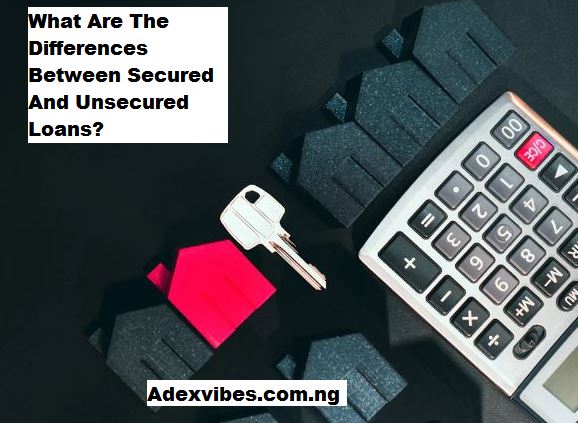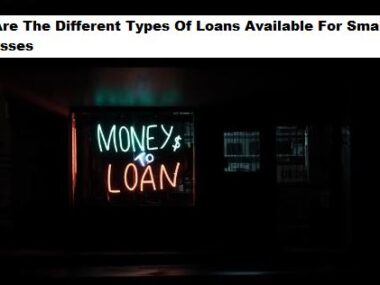When it comes to borrowing money, there are two main types of loans: secured and unsecured. Each type has its own set of features, benefits, and risks. Understanding the differences between these loan types is crucial to making informed decisions about borrowing money. Whether you are looking to finance a major purchase or consolidate debt, knowing the pros and cons of secured and unsecured loans will help you choose the best option for your financial situation.
In general, secured loans require collateral, while unsecured loans do not. The collateral is something of value, such as your home or car, that the lender can seize if you fail to repay the loan. Unsecured loans, on the other hand, do not require any collateral. However, they tend to come with higher interest rates because they pose a higher risk to the lender. As you can imagine, each loan type has its own set of advantages and disadvantages, and the best choice for you will depend on your financial goals and risk tolerance.
So, what are the differences between secured and unsecured loans? This article will break down the essential factors to consider, from interest rates to loan terms, and will help you understand which loan might be the right choice for you. Let’s dive in and explore the differences in detail.
Also, READ
How Do Student Loans Affect Your Credit Score
What Is The Best Personal Loan For Debt Consolidation In 2025?
What Is The Difference Between A Secured And Unsecured Loan Quizlet?
When researching loan types, a quick search may lead you to platforms like Quizlet, where people often ask, “What is the difference between a secured and unsecured loan?” To put it simply, the key difference lies in collateral. Secured loans require the borrower to provide an asset as collateral to back the loan. This asset could be anything of value, such as a home, car, or savings account. If the borrower fails to repay the loan, the lender can seize the collateral to recover the debt. Examples of secured loans include mortgages, car loans, and home equity loans.
Unsecured loans, on the other hand, don’t require any collateral. This means that the lender is taking a bigger risk since they have no physical asset to claim if the borrower defaults. Because of this, unsecured loans usually come with higher interest rates to offset the added risk. Common examples of unsecured loans include personal loans, credit cards, and student loans. While unsecured loans might seem like an attractive option since they don’t require collateral, they can be more expensive in the long run due to the higher interest rates.
In summary, the difference between a secured and unsecured loan comes down to the presence (or absence) of collateral. This distinction directly influences the loan’s interest rates, repayment terms, and the risk to the lender.
Is It Better To Get A Secured Or Unsecured Loan?
Deciding whether it is better to get a secured or unsecured loan depends on several factors, including your financial needs, credit score, and risk tolerance. Secured loans generally offer lower interest rates because the lender has collateral to fall back on if you default. This makes secured loans a good choice if you need to borrow a large sum of money and have valuable assets you can offer as collateral.
However, secured loans come with more risk. If you cannot repay the loan, the lender can seize your collateral, such as your home or car, to recover their losses. This is a significant risk, especially if you cannot afford to lose the asset. Therefore, it is important to carefully assess your ability to repay the loan before deciding to use your assets as collateral.
Unsecured loans, on the other hand, do not require collateral, which can be appealing if you are hesitant to put your property at risk. However, since unsecured loans are riskier for lenders, they usually come with higher interest rates, which means you may end up paying more over the life of the loan. If you have a strong credit score and can qualify for an unsecured loan with a relatively low-interest rate, this might be a better option for you. But if your credit score is less than stellar, you may end up paying a much higher interest rate than you would for a secured loan.
Ultimately, the decision depends on what you’re comfortable with in terms of risk and how much you need to borrow. If you have the financial stability to take on a secured loan and want to minimize interest rates, this option might be more beneficial. But if you are unwilling to risk your assets, an unsecured loan could be the better route, though it may come at a higher cost.
What Is Bad About An Unsecured Loan?

While unsecured loans have their advantages, such as not requiring collateral, they also come with a set of disadvantages. One of the main drawbacks of unsecured loans is that they typically carry higher interest rates compared to secured loans. Since the lender is not backed by any collateral, they take on more risk, which is passed on to you in the form of higher interest charges.
In addition to higher interest rates, unsecured loans may come with stricter eligibility requirements. Lenders typically require a good credit score to approve unsecured loans. If your credit score is not in great shape, you may not qualify for an unsecured loan at all, or you may be offered a loan with a much higher interest rate. This can make it more difficult to borrow money, especially if you are in need of a loan but do not have perfect credit.
Another potential downside to unsecured loans is that they often come with shorter repayment terms, which can lead to higher monthly payments. With a shorter loan term, while you may pay off the loan faster, the monthly payments will be larger, which could put a strain on your budget. If you are unable to keep up with the payments, you may risk damaging your credit score or even defaulting on the loan.
Which Best Describes The Difference Between Secured And Unsecured Credit?
The best way to describe the difference between secured and unsecured credit is that secured credit is backed by collateral, while unsecured credit is not. This key distinction impacts the level of risk for both the borrower and the lender.
In the case of secured credit, such as a mortgage or car loan, the borrower pledges an asset as collateral to secure the loan. If the borrower fails to repay, the lender has the right to take possession of the asset to recoup the loss. Since the lender has this security, they are more likely to offer lower interest rates and longer repayment terms, making secured loans a good option for larger borrowings.
Unsecured credit, on the other hand, does not require collateral. Examples include personal loans, credit cards, and student loans. Since there is no collateral, the lender assumes more risk, and as a result, unsecured credit usually carries higher interest rates and may have more stringent eligibility criteria.
The key takeaway is that secured credit is a safer bet for lenders, and this translates into better terms for borrowers, such as lower interest rates. Unsecured credit is riskier for lenders, which means borrowers typically face higher interest costs in exchange for not putting up collateral.
What Is The Main Difference Between Secured And Unsecured Loans?
The main difference between secured and unsecured loans is the presence of collateral. A secured loan requires the borrower to provide collateral—an asset that the lender can seize if the borrower defaults. Examples of secured loans include mortgages, car loans, and home equity loans. The collateral offers the lender a form of protection, which is why secured loans tend to have lower interest rates compared to unsecured loans.
Unsecured loans, however, do not require collateral. Instead, these loans are granted based on the borrower’s creditworthiness, income, and other factors. Because unsecured loans pose a greater risk to the lender, they tend to have higher interest rates. Common examples of unsecured loans include personal loans, student loans, and credit card debt.
While secured loans offer the benefit of lower interest rates, they come with the risk of losing your collateral if you fail to repay the loan. Unsecured loans, while not requiring collateral, may come with higher costs and may be harder to qualify for, especially if you have a poor credit history.
Is Secured Better Than Unsecured?
Whether secured loans are better than unsecured loans depends on your specific financial situation. Secured loans typically offer lower interest rates and longer repayment terms because they are backed by collateral. This can make them a better choice if you need to borrow a large amount of money and have valuable assets you are willing to pledge.
However, secured loans come with a risk: If you fail to make the payments, the lender can seize your collateral. This could lead to the loss of your home, car, or other valuable property. If you are not confident in your ability to repay the loan or are uncomfortable putting your assets at risk, an unsecured loan may be a better choice, despite the higher interest rates.
Unsecured loans are often more accessible and don’t require collateral, but the trade-off is that they usually come with higher interest rates. Additionally, unsecured loans may be harder to qualify for if you don’t have a strong credit score.
In short, secured loans might be a better option if you need a lower interest rate and can afford the risk of losing your collateral. Unsecured loans may be more suitable if you don’t want to risk your property but are willing to accept higher interest rates.
Conclusion
In conclusion, understanding the differences between secured and unsecured loans is crucial for making informed borrowing decisions. Secured loans offer lower interest rates but come with the risk of losing your collateral if you default. Unsecured loans, while not requiring collateral, tend to have higher interest rates and may be harder to qualify for.
Your choice between a secured and unsecured loan should depend on your financial goals, risk tolerance, and ability to repay the loan. Whether you opt for a secured or unsecured loan, it’s important to carefully assess your financial situation and choose the loan type that best fits your needs. By making an informed decision, you can borrow money in a way that helps you achieve your financial goals without overextending yourself.






